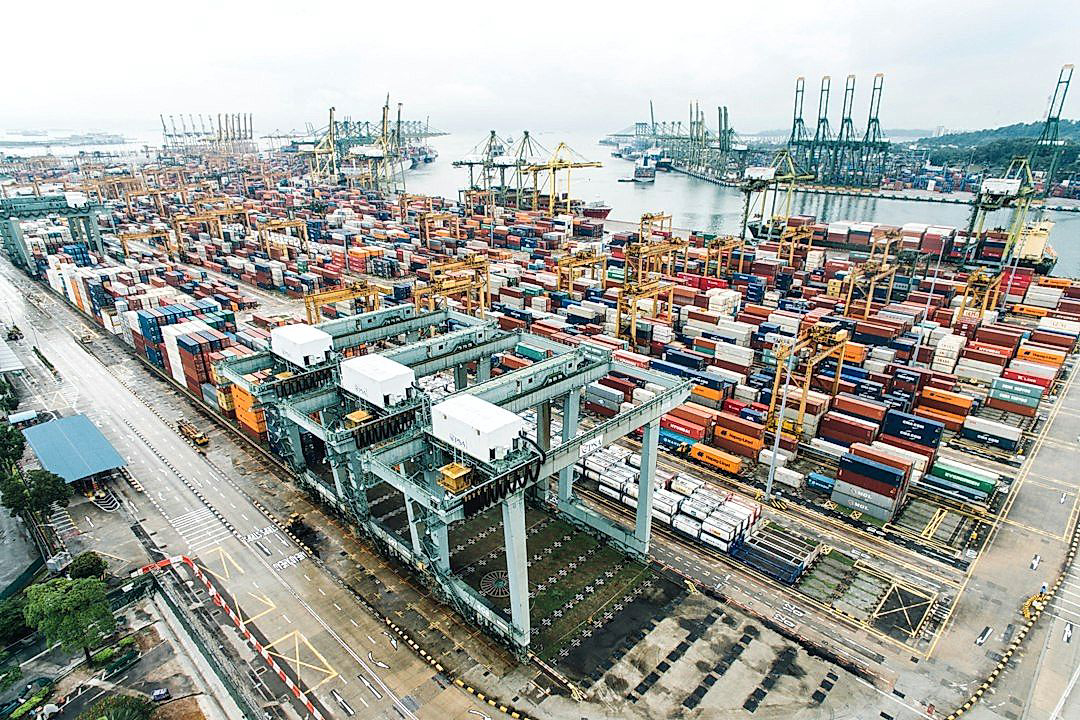In the dynamic landscape of the global produce industry, operational efficiency is non-negotiable.
Each stage, right from farming to shipping, plays a crucial role in bringing fresh produce to markets and consumers worldwide.
Streamlining shipping operations, particularly, can lead to significant improvements in time management and cost-effectiveness.
In the face of rising demands and environmental concerns, businesses are now seeking innovative procedures and methods to optimize their shipping procedures.
This blog will offer valuable insights into these strategic approaches.
The end goal is to show how the right strategies can transform a mundane detail like shipping into a powerful catalyst for business success.
Strategies For Enhancing Efficiency In Produce Shipping Operations
1. Implement advanced tracking and inventory management systems
The use of advanced tracking systems in the production sector greatly contributes to the process of shipping operations.
These systems enable businesses to effectively monitor the movement of goods from the point of production to the final destination.
Notably, a well-implemented tracking system offers real-time tracking of goods all along the supply chain.
Implementation of such systems can help avoid or minimize instances of lost or misplaced shipments.
This seamless auditing of goods circulation ensures efficient produce shipping operations.
On the other hand, inventory management systems are equally essential in enhancing efficiency in produce shipping operations.
An efficient inventory management system allows for the precise keeping of records of all the goods in a warehouse.
This, in turn, makes it easier to organize, manage, and keep track of the stock levels.
The program will notify the supervisory team when re-stocking is necessary, consequently avoiding any chance of running out of stock or overstocking.
Advanced inventory management systems also provide the option of forecasting future stock levels based on the past and present data.
This predictive feature significantly helps in the planning and preparation of shipping operations
Both the implementation of advanced tracking and inventory management systems provide data that can be invaluable for analysis and evaluation.
This data can further be used to identify areas of inefficiency along the supply chain that need improvements.
It is clearly evident that a well-structured synthesis of both tracking and inventory management systems results in a well-coordinated and efficient produce shipping operation.
It is therefore of paramount importance that companies look into adopting and incorporating these systems into their day to day operations.
While the initial cost of implementation might be high, the long-term benefits of consistency and efficiency in produce shipping operations are well worth it.
2. Utilize energy-efficient transport and logistic solutions.
In the current global scenario, there is an increasing emphasis on businesses to adopt sustainable practices; integrating energy-efficient transport and logistic solutions is one such approach in enhancing efficiency in produce shipping operations.
Using energy efficient transportation means could greatly reduce the carbon footprint associated with produce shipping operations without compromising the speed and efficiency of product delivery.
Consider using hybrid or electric vehicles for local deliveries.
For long-haul transport, companies should consider employing modern, fuel-efficient vehicles and optimizing route and capacity usage, which can significantly reduce fuel consumption.
Optimizing logistic solutions entails adopting sophisticated logistics systems that consistently improve shipment planning, order fulfillment, and product delivery speed.
Such solutions can potentially achieve significant cost savings by eliminating unnecessary shipping mileage and reducing fuel consumption.
Companies can also take advantage of advancements in supply chain analytics to pinpoint inefficiencies in their logistics networks and optimize routes and schedules.
The implementation of telemetry systems can further enhance the operational efficiency of logistics by providing real-time tracking of vehicles, enabling quick response to any changes in the schedule or route.
Additionally, adopting a hub-and-spoke system for shipping operations can lead to significant energy savings and efficiency improvements.
This system involves moving goods from a central ‘hub’ to various ‘spokes’ in the most optimal and energy-efficient manner.
Moreover, cooperation with other businesses could lead to shared logistics operations, further improving transport efficiencies and reducing the environmental impact.
It is vital for businesses to continuously assess and improve their transport and logistics strategy.
This would involve keeping up with advancements in technology and best practices, and ensuring their transport and logistics operations are as efficient and sustainable as possible.
On a final note, it is important to remember that the adoption of any energy-efficient transport and logistics solution should be guided by an understanding of the business’s unique shipping requirements and budget constraints.
3. Conduct regular maintenance checks on shipping vehicles
One of the most principal factors in achieving efficiency in produce shipping operations is ensuring that all shipping vehicles are functioning optimally and efficiently. This means conducting regular, thorough maintenance checks and service on each vehicle.
When shipping vehicles are not properly maintained, they are more likely to break down or operate less efficiently than their capacity. This can lead to delayed shipments, spoiled produce, higher fuel expenditures, and increased operational costs.
Regular maintenance involves a variety of essential tasks. It includes checking tire pressure, testing the efficiency of cooling systems (particularly vital for produce shipping), and ensuring that machinery such as lifts and automated loading systems are operating correctly.
A successful shipping operation will conduct these maintenance checks before every journey, as well as scheduling extensive checks periodically to avert any problems before they become serious.
Moreover, employing trained vehicle maintenance staff to conduct these checks is crucial. These experts can spot issues that might not be apparent to untrained eyes and can ensure that each vehicle is performing at its absolute best.
Tracking vehicle health metrics using modern software solutions can also be implemented. This allows real-time monitoring of critical vehicle factors such as tire pressure, engine performance, and fuel efficiency.
With such information readily available, potential issues can be identified and rectified immediately before causing any disruptions to the shipping schedule.
Data from this software can also be used to devise a strategic maintenance schedule, predictive of when each component of a vehicle is likely due for service or replacement.
Replacement parts should be sourced and stored in advance so there is no waiting time when a part needs to be replaced.
Maintenance is not merely about keeping vehicles on the road; it’s also about maximizing their efficiency. Efficient vehicles use less fuel, contribute less to emissions, and perform their functions quicker and more effectively.
Standards for maintenance should be documented and consistent, with every team member understanding the vital importance of this aspect of the operations.
Last but not least, where it is cost-effective and viable, upgrading to newer, more efficient vehicles, or retrofitting older models with energy-efficient parts can also significantly enhance the overall efficiency in produce shipping operations.
This investment will likely yield sizable long-term returns through reduced operational costs, less vehicle downtime, and more efficient deliveries, resulting in satisfied customers and a healthier bottom-line.
Therefore, it is apparent that regular maintenance plays a pivotal role in enhancing efficiency in produce shipping operations.
4. Streamline Packing and Loading Processes
Packaging and loading are vital stages in the process of shipping produce, heavily influencing the efficiency of overall operations.
By streamlining these processes, businesses can increase operational speed, accuracy, and overall efficiency, improving their bottom line.
This can be achieved by embracing technological enhancements such as automated machines and conveyor belt systems, which can significantly speed up the packing and loading process.
These technologies minimize human error, ensuring produce is packed and loaded correctly, preventing any damage during transit and hence reducing wastage.
To streamline processes, standardization is also key.
A standardized packing process means following a set of defined procedures to pack all types of produce, which increases the predictability of tasks and boosts efficiency.
This standardization eliminates confusion, reduces the time taken to train new staff, and ensures a consistent quality of work.
Similarly, a streamlined loading process would imply following an effective and efficient loading plan.
This involves positioning produce in a way that maximizes space utilization within a vehicle, also reducing the number of trips needed.
Such efficient use of transport capacity not only cuts down on fuel costs, but also reduces the business’ carbon footprint, contributing to sustainability goals.
It is also essential to focus on the safety and proper handling of the packed goods during loading.
Poor handling at this stage could lead to damaged goods, creating wasted efforts at the packing stage and leading to financial losses.
Therefore, proper training of loading staff on best practices is a crucial component of streamlining the loading process.
Additionally, flexibility is also a significant attribute of streamlined processes.
Understanding that each shipment may have specific requirements, it is essential to be able to adapt the packing and loading procedures accordingly, without compromising on efficiency and speed.
In essence, to streamline packing and loading processes entails incorporating technology, standardizing processes, planning efficiently, ensuring safety and maintaining flexibility.
5. Improve Training for Shipping and Handling Staff
The efficiency of produce shipping operations is undeniably dependent on the competence and understanding of the shipping and handling staff.
One of the effective ways to enhance this aspect is to improve staff training.
It is critical to acknowledge that the staff forms the backbone of any shipping operation and their level of expertise significantly determines the efficiency of the entire process.
As such, offering them refresher courses and exposing them to new industry standards and procedures can be instrumental in fostering operational efficiency.
Ensuring that the training is frequent, comprehensive, and relevant equips the staff with better skills and knowledge on operation processes and thus, increases productivity in produce shipping operations.
This training should not only focus on their individual roles, but also on communication and coordination skills to ensure seamless interaction and collaboration among the team members.
Improving training for shipping and handling staff also involves investing in technological resources, tools, and equipment used in training.
This enables the staff to be up to date with the latest technological advancements in the shipping industry and be able to utilize them efficiently to increase productivity.
Moreover, the overall performance of the staff can be improved by focusing on areas of weakness identified during the performance appraisal process.
Training programs can be tailor-made to reinforce these areas thereby enhancing the competency levels of each staff member.
Additionally, a well-structured and properly executed training program provides a platform for staff members to learn from their mistakes and make necessary improvements.
This undeniably cultivates a learning culture within the organization which not only improves efficiency but also motivates the employees towards better performance.
Motivated employees exhibit a high level of commitment and dedication, which play a vital role in enhancing efficiency in produce shipping operations.
Overall, improving training for shipping and handling staff is a proven strategy for enhancing the efficiency of produce shipping operations.
This approach not only boosts the staff’s knowledge, skills, and expertise, but also fosters a holistic improvement in their performance and ultimately increases the overall productivity of the shipping process.
The Bottom Line
Significant improvements can be achieved in the area of shipping and logistics when certain key strategies are correctly employed.
By implementing advanced tracking and inventory management solutions, businesses can obtain real-time data and intelligence, which in turn can facilitate informed decision-making processes.
Energy efficiency should also be a priority, through the use of eco-friendly transport and logistics innovations.
The essence of carrying out regular maintenance checks on all shipping vehicles to ensure optimal functionality cannot be overstated.
Furthermore, streamlining packing and loading processes can effectively reduce time waste and potentially increase customer satisfaction.
Finally, enhancing the training modules of shipping and handling personnel goes a long way in ensuring safety and efficiency.
All in all, these strategies, when effectively incorporated, can greatly improve performance and productivity while also reducing unnecessary expenses in the logistics and shipping industry.




